
Last year was an unprecedentedly lush and vigorous year for my garden. Well, for the weeds in my garden, anyway.
My excuse, if I have one, is that with a toddler and new baby, I hadn’t quite figured out that “mom of 2” thing yet. By the time I did kinda sorta figure it out, lots of those weeds were taller than I am. I may be short, but still…
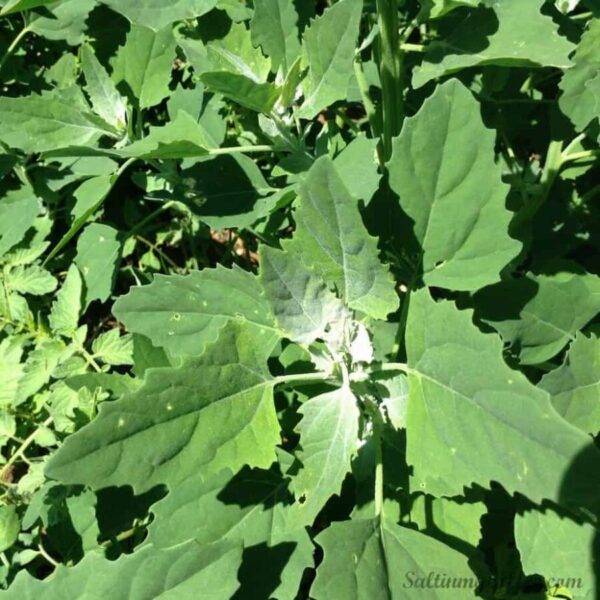
So, I changed my perspective. I took a closer look at the weeds thriving in and between what used to be rows. I discovered that, while my winter squash looked like miserable survivors trying to eke out an existence on the slopes of Mordor, I was growing a shire-worthy crop of yarrow, sweet sorrel, lambsquarter, and joe-pye weed.
Rather than try too hard to turn my garden around, mid-growing season, I found it a less-daunting challenge to find new ways of using the nutritional bounty that I was already growing. We had wonderful salads with the sweet sorrel. We picked yarrow for salves and tinctures, and dried it for tea. And I found that I particularly enjoyed making use of the lambsquarter.
Growing up, I’d known this plant as “pigweed”. I could remember my grandmother saying how much she loved it as an edible green, but I couldn’t for the life of me remember anything about how she actually prepared it. So I called gram.
When I asked her how to cook it, she told me, “Oh, you know – just cook it like spinach.” Then she went on to recount a tale from her newlywed days, when her new Mother-in-Law (my great-grandma Florence) came to dinner. Gram had served lambsquarter as a vegetable with the meal, and Great-Grandma Florence just raved about what wonderful spinach that was! “I never did tell her it was really weeds!” recalled Gram, with a chuckle.
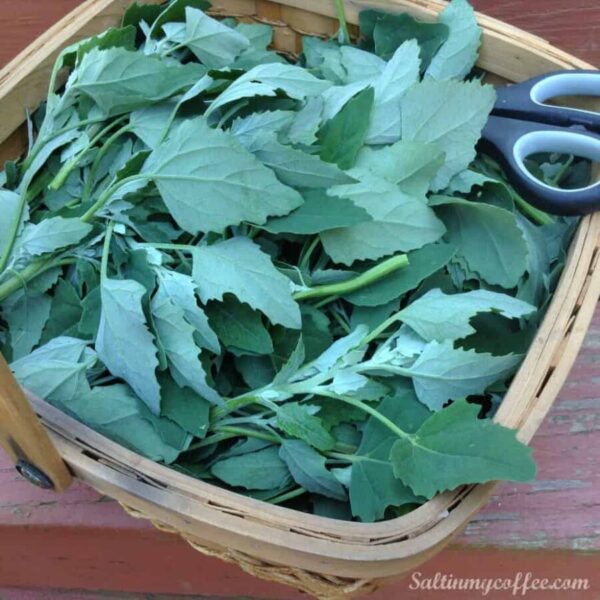
And so, in my own little kitchen, I found myself using lambsquarter in every way that I would use spinach. I loved knowing that it’s a nutritional powerhouse – full of B Vitamins, as well as Vitamins A and C. It’s also a fantastic source of minerals, including calcium, manganese, potassium, magnesium, and iron.
From salad to smoothies, we ate a lot of it that summer. I also fed it by the armload to the pigs. But still – I had an enormous crop, and was certain there must be good ways to put some of it up for the winter. So I took to canning (more on that in another post), and dehydrating it.
Turns out, it’s extremely easy to dehydrate, and makes an absolutely wonderful dried herb. The smell is bright and fresh – almost like alfalfa, and it keeps its color beautifully. I find that it brings a wonderful depth of character to roast lamb or chicken (I use it in my recipe here), and it makes a pleasant addition to beef stew. I ended up dehydrating several pints, and it has become one of my go-to spices this winter.
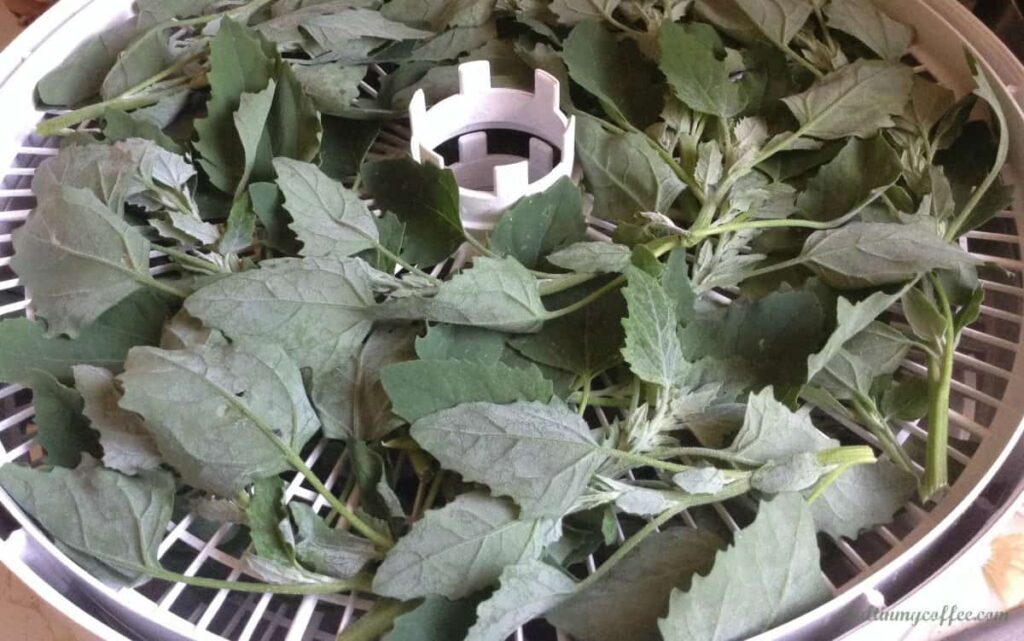
Drying lambsquarter to stock your spice cabinet is so easy. Pick it in the morning when the nutrient levels are highest. Rinse it free of any dirt, but don’t intentionally wash off the white “dusty” outer part of the top leaves. Those are especially mineral-dense, so you want that part.
Press gently between towels to dry off the bulk of any water remaining on the leaves. Then, spread out on your dehydrator trays. (This is the dehydrator that I use and love.) I dehydrate mine right on the stems, and you can see from the picture that I really put quite a lot on the trays. These dehydrate WAY down.
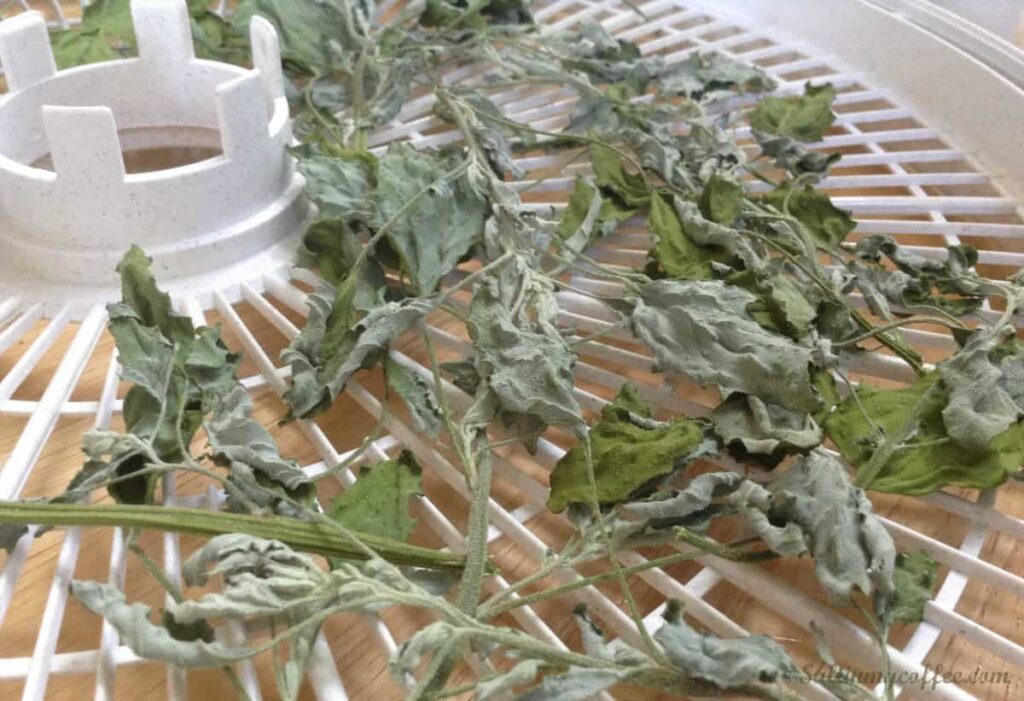
Dehydrate at 125 for about 5-6 hours, until leaves and small stems are brittle, and crumble easily when crushed between your fingers. It’s ok for the thicker, main stems to still be a little flexible.
Remove from the dehydrator trays. Over your food processor, slide your fingers down the stems, stripping the brittle leaves and small stems into bowl. Discard any larger, still-flexible stems.
A few quick pulses, and it will look like a dried herb that you’d buy – something between basil and oregano in appearance. Store it in an airtight container, out of the light – just as you would any spice.
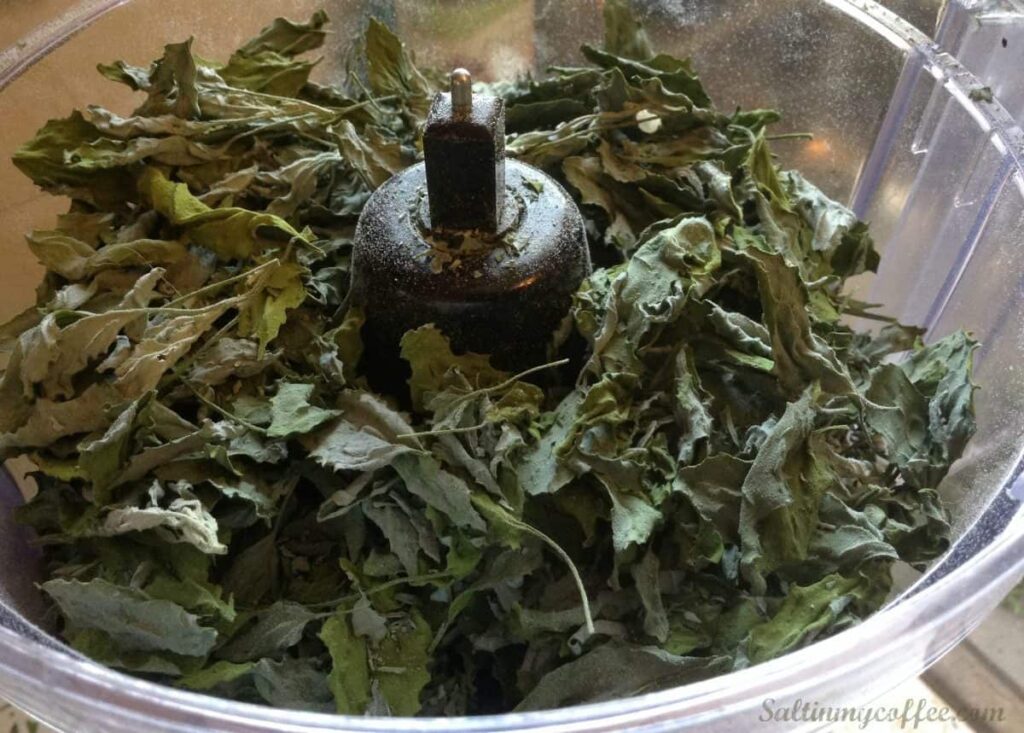
Do you use lambsquarter in your cooking? I’d love to hear about the ways that you enjoy it!
